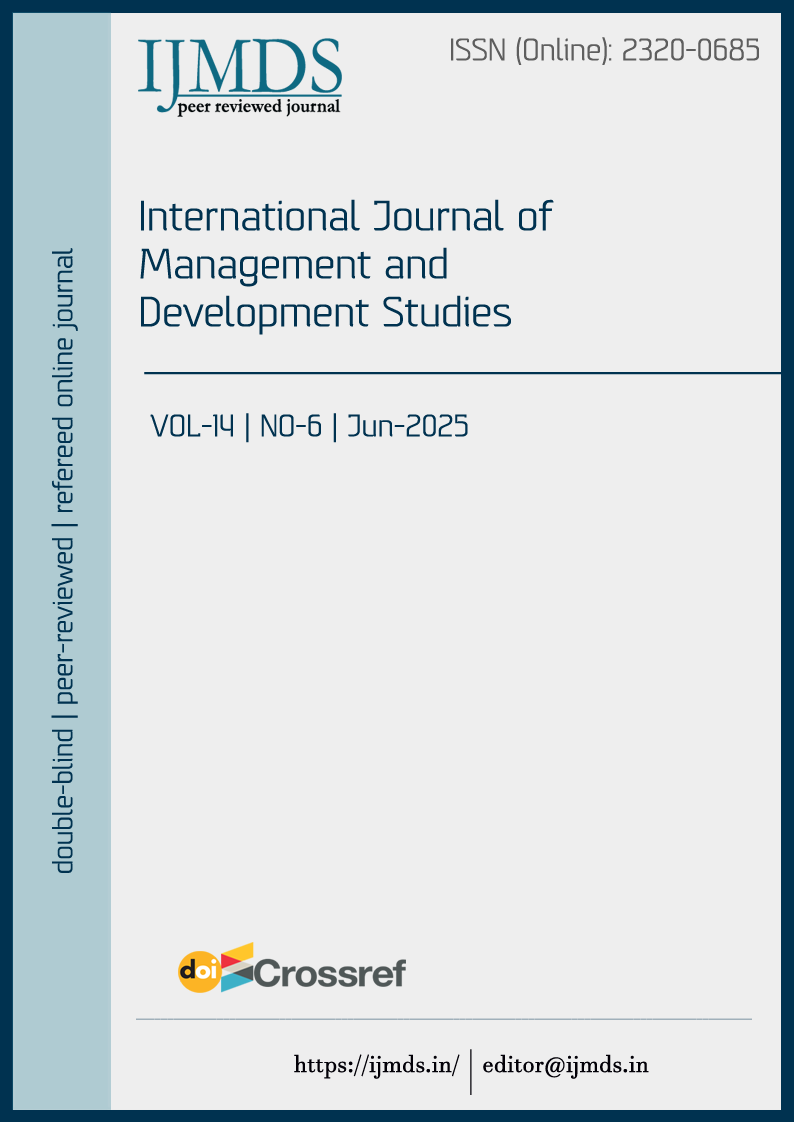Labour Market Dynamics in West Bengal: Evidence from PLFS 2023–24
DOI:
https://doi.org/10.53983/ijmds.v14n6.003Keywords:
Labour Force Participation, Socio-Demographic Determinants, Social ExclusionAbstract
This study examines the determinants of labour force participation (LFP) in West Bengal using unit-level data from the Periodic Labour Force Survey (PLFS) 2023–24. Employing a logistic regression model separately for rural and urban populations, the analysis investigates the influence of age, education, caste, marital status, household type, and economic status on the probability of workforce engagement. The findings indicate a mid-life peak in LFP, with higher educational attainment positively associated with participation. While illiteracy significantly reduces the likelihood of labour market entry. Caste continues to shape employment outcomes, with Scheduled Castes and Tribes displaying higher participation, particularly in rural areas. Marital status, especially widowhood, and upper household economic well-being (measured via MPCE) exhibit negative association with LFP. Results suggests socioeconomic privilege may reduce work incentives. The study also highlights the need for regionally differentiated and socially inclusive employment strategies, particularly those targeting informal sector vulnerabilities and gender-based constraints in labour market access.
Downloads
References
Bagchi, A. K. (2021). Changing Employment Conditions in the Rural Labour Market of West Bengal. The Indian Journal of Labour Economics, 64, 61–83. https://doi.org/10.1007/s41027-021-00331-z
Basole, A., Abraham, R., Rakshit, A., Vijayamba, R., Shrivastava, A., & Halder, T. (2023). State of Working India 2023: Social identities and labour market outcomes. Centre for Sustainable Employment, Azim Premji University. https://cse.azimpremjiuniversity.edu.in/state-of-working-india/
Biswas Roy, M., Roy, P. K., & Samal , N. R. (2016). A comparative study of labour participation in three wetland regions of West Bengal, India. Journal of The Institution of Engineers (India): Series A, 97(4), 427–434. https://doi.org/10.1007/s40030-016-0150-6
Biswas, D. (2021). Changing Dynamics of Employment in Rural West Bengal During Post-Reform Period. Retrieved from Academia.edu:
Jose, A. V. (2020). Employment challenges in Kerala. Kerala Economy, 1(1), 25–28. https://doi.org/10.5281/zenodo.7453192
Singh, A. (2022). Factors determining the labour force participation in Haryana. International Journal of Research Publication and Reviews, 3(11), 3115–3119. https://doi.org/10.55248/gengpi.2022.3.11.41
Singh, A., & Kataria, N. (2023). Trends and determinants of labour force participation in Tamil Nadu: An in-depth analysis from NSSO data. International Research Journal of Modernization in Engineering, Technology and Science (IRJMETS), 5(10), 79–87. https://doi.org/10.56726/IRJMETS45042
Singh, A., & Meena, A. L. (2023). Exploring trends and factors influencing labour force participation in Uttarakhand: Evidence from NSSO data. International Journal of Research Publication and Reviews, 4(6), 524–532. https://doi.org/10.55248/gengpi.4.623.44955

